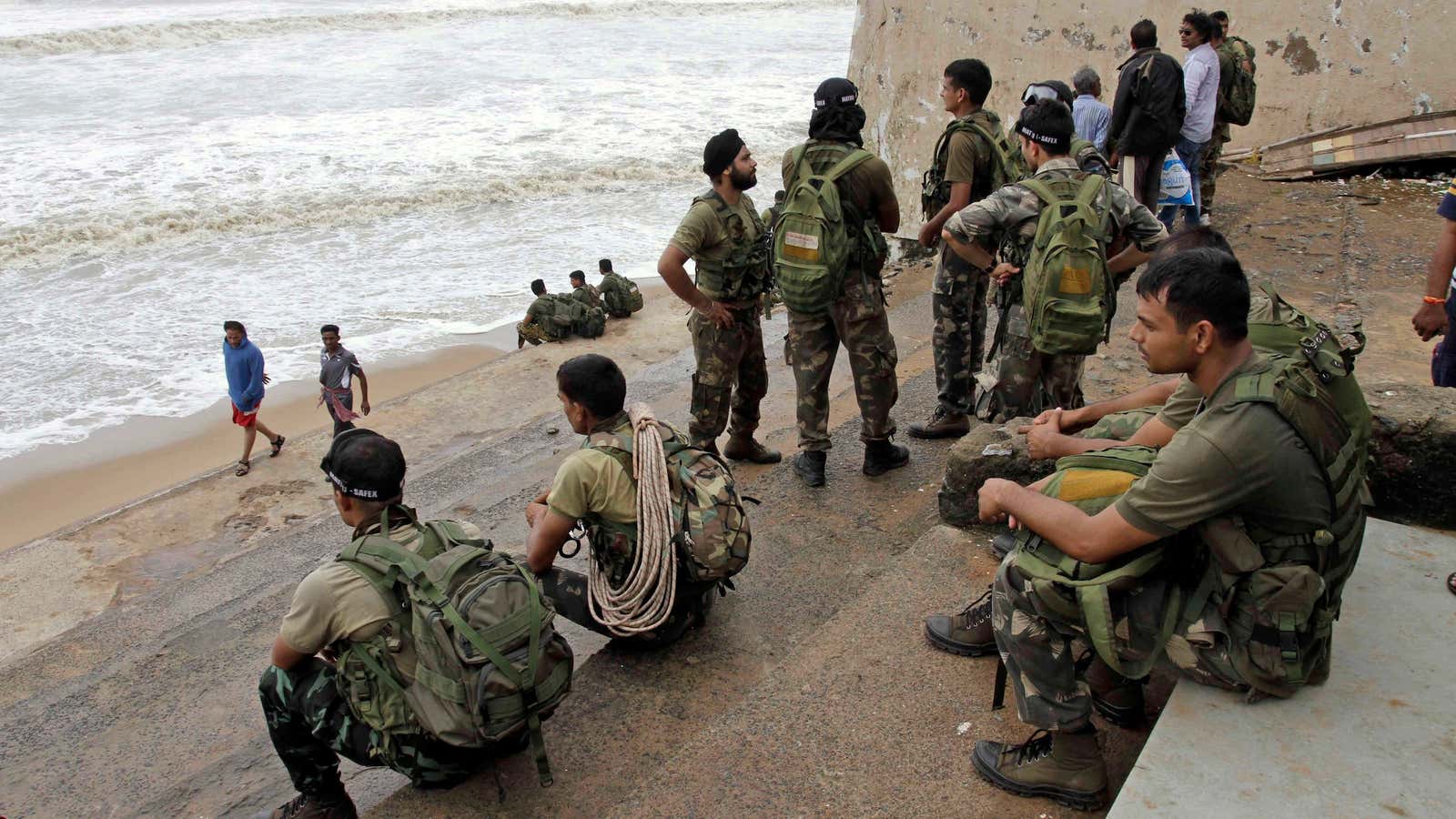Much to the relief of India’s east coast dwellers, the immediate fallout of giant Cyclone Phailin appears to be far milder than expected.
The country began clearing through miles of wreckage Sunday after Phailin flooded towns and villages and wiped out tens of thousands of homes. Disaster authorities reported the loss of 14 people, mostly in the state of Orissa. By contrast, a cyclone that ravaged Orissa in 1999 killed more than 10,000. The storm’s maximum sustained winds hit 200 km per hour when the storm hit land on Saturday. Winds had fallen to roughly 80 km per hour by mid-day Sunday.
The spread of technology in recent years is considered one major reason for the milder impact of Phailin compared to the super cyclone of 14 years ago. For instance, nearly a billion people use mobile phones in the country, up from fewer than 40 million just over a decade ago, reports the New York Times. Many believe the government’s prompt evacuations of people to shelters ahead of the storm made a big difference. India was wildly under-prepared for the storm of 1999, and the country’s own satellite weather system was destroyed. By contrast, the central government mounted a massive disaster-preparedness campaign to prepare for Phailin.
Still, a complete assessment of the effects of the cyclone will take more time. Crops took a severe hit; an estimated 5,000 sq km of mostly paddy crops, worth some $320 million, were destroyed.
